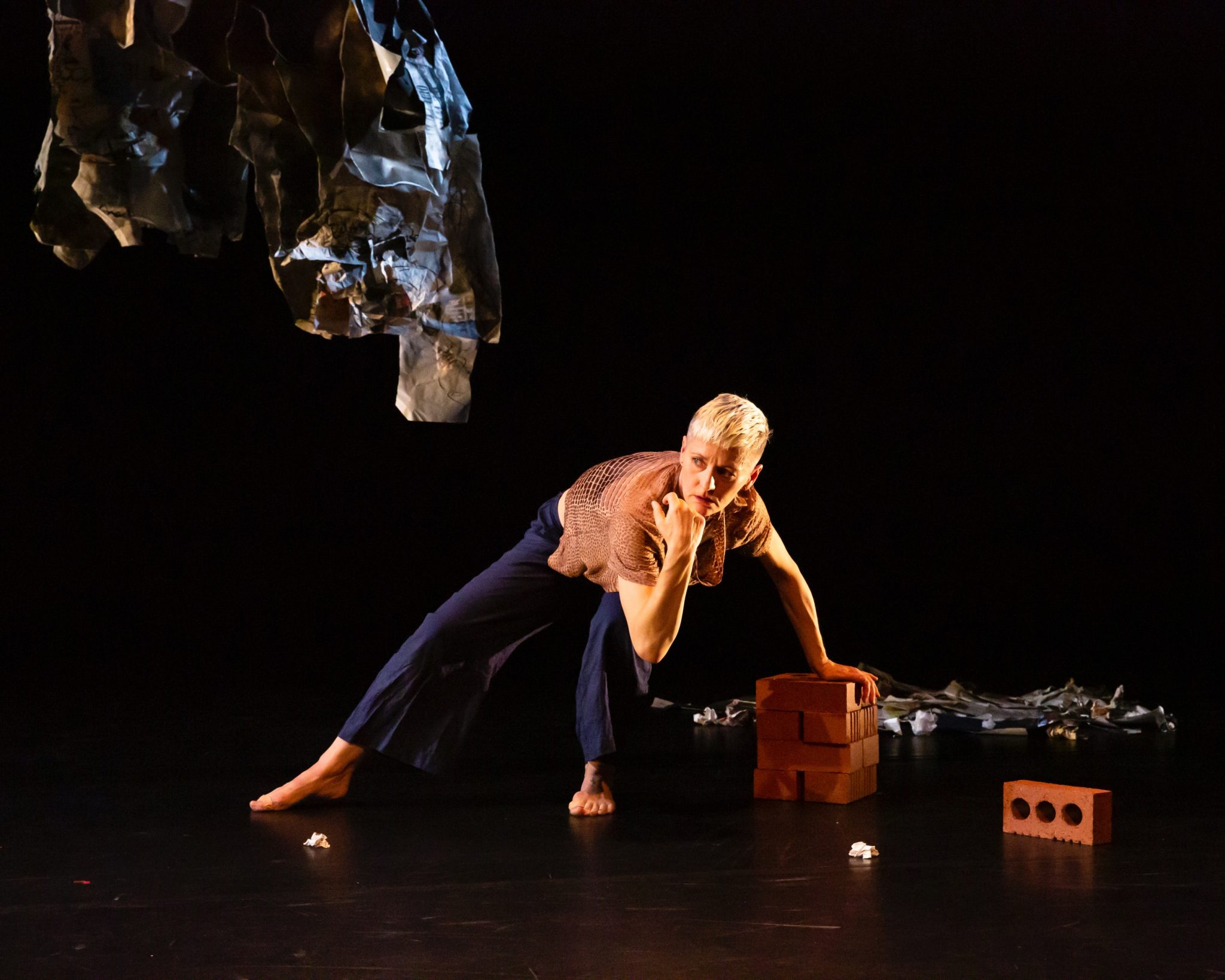The first thing that strikes one about Curious Seed’s And the Birds Did Sing is its sparsity. It is a work that has been given much room to breathe and its story, like its performer, treads slowly and carefully. This is a work born of artistic maturity, which has the confidence to allow carefully-weighted words and movements to unfurl at their own pace, within the context of Yvonne Buskie’s beautifully minimal set.
Christine Devaney, who wrote the text, choreographed the movement, and performs the work, is a truly great story teller. Her words are personal, poignant and nicely balanced, and she understands how to weave a story in and about an audience, drawing them in with her threads, quickly enthralling them. Devaney’s movements underline the emotions raked up by her words, and seem to come from deep within her. Story and movement are symbiotic: they fuel each other and wind around each other, ultimately empowering each other.
Luke Sutherland’s music, on the other hand, does not appear to be a good fit to either Devaney’s words or her movements. This is not because the music is bad—far from it: Sutherland is an accomplished musician who knows exactly what he is doing, and again we have a well-produced, mature piece of work here. It’s just that Sutherland’s tunes and, indeed, even his often heavy use of artificial reverberation, are redolent of a much safer and well-known place than the one Devaney clearly wants to take us to.
Not only that, the music’s almost constant wallpaper presence fills up the work’s beautiful interstices: a pillow over its face. The only time that And the Birds Did Sing really does begin to come together with the sound is during those short interludes where the latter is more abstract—in those moments where it is more akin to sound design, or when it is just a little less full-on tonal and/or metrical in nature.
And the Birds Did Sing is all about less being more, and it has the kind of spareness to it that allows Devaney to really connect with her audience. It is, perhaps, understandable that choreographers feel unwilling to take the same sort of risks with their music that they might feel inclined to take with other aspects of their work: music is traditionally their bedrock after all. However, it is in the (sadly few) silences that the real power of And the Birds Did Sing becomes apparent. Unfettered by the music, its own, unique voice rings clear, and the work is allowed to soar.
